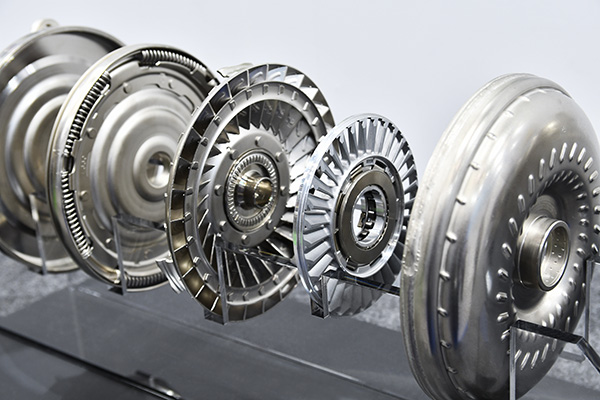
When it comes to car transmissions, the common questions about the differences revolve around manual versus automatic. While manual transmissions are well-known for their clutch pedal, many still wonder if automatic transmissions also incorporate a clutch. The short answer is yes, but it's a bit more complex than in manual systems. Let's explain automatic transmissions and uncover the role of clutches in these systems.
Automatic Transmissions
Automatic transmissions are marvels of engineering, designed to shift gears automatically without the need for driver intervention. This system makes driving more convenient, especially in stop-and-go traffic. Automatics handle this process seamlessly unlike manual transmissions, which require the driver to manually engage and disengage the clutch to shift gears.
At the heart of an automatic transmission is a device called a torque converter, which performs a role similar to that of a clutch in a manual transmission. However, automatic transmissions also use a series of internal clutches and bands to control the gear shifts and ensure smooth power delivery from the engine to the wheels.
The Role of the Torque Converter
A torque converter is a fluid coupling device situated between the engine and the transmission. Its primary function is to transmit and multiply the engine's torque to the transmission. Here's a simplified explanation of how it works:
- The pump, connected to the engine, rotates and pushes transmission fluid into the turbine.
- The turbine, connected to the transmission, receives the fluid, causing it to spin and transfer power to the transmission.
- The stator, located between the pump and turbine, redirects the returning fluid to increase efficiency.
The torque converter allows the engine to keep running while the vehicle is stationary, eliminating the need for a manual clutch pedal. However, additional clutches play a crucial role within the transmission.
Internal Clutches in Automatic Transmissions
Automatic transmissions contain multiple clutch packs and bands that control the engagement of different gears. These clutches are activated by hydraulic pressure, which is controlled by the transmission's valve body. When the vehicle's computer determines that a gear change is necessary, it directs the valve body to apply pressure to the appropriate clutch pack, engaging the desired gear.
These clutches are essential for the smooth operation of the transmission. Without them, the transmission wouldn't be able to effectively manage the varying levels of power and speed required for different driving conditions. The internal clutches ensure that gear shifts are smooth and barely noticeable to the driver.
The Importance of Clutches in Modern Automatics
Modern automatic transmissions, including continuously variable transmissions (CVTs) and dual-clutch transmissions (DCTs), utilize clutches in different ways to enhance performance and efficiency.
Dual-Clutch Transmissions (DCTs)
These advanced systems use two separate clutches for odd and even gears. This setup allows for faster and smoother gear changes, as one clutch is always ready to engage the next gear while the other disengages the current gear.
Continuously Variable Transmissions (CVTs)
While CVTs don't have traditional gears, they still use a clutch mechanism to manage the connection between the engine and the transmission. This system allows for an infinite range of gear ratios, providing optimal power and fuel efficiency.
Common Issues with Automatic Transmission Clutches
Despite their advanced design, automatic transmission clutches can experience problems over time. Common issues include:
- Slipping: If the clutches are worn or damaged, they may slip, causing a loss of power and acceleration.
- Shuddering: This occurs when the clutches engage unevenly, resulting in a shaking or vibrating sensation during gear shifts.
- Delayed Shifting: Worn clutches can cause delays in gear engagement, making the vehicle feel sluggish or unresponsive.
- Overheating: Excessive heat can damage the clutches, leading to reduced performance and potential transmission failure.
Regular maintenance and prompt attention to any signs of trouble can help prevent these issues and extend the life of your transmission.
Maintaining Your Automatic Transmission
Proper maintenance of your automatic transmission is crucial for ensuring its longevity and performance. Here are some tips:
- Regular Fluid Changes: Transmission fluid is essential for lubricating and cooling the clutches and other internal components. Check your owner's manual for recommended service intervals.
- Fluid Level Checks: Ensure your transmission fluid is at the proper level. Low fluid can cause overheating and damage.
- Prompt Repairs: If you notice any signs of transmission trouble, such as slipping, shuddering, or delayed shifting, have it inspected by a professional immediately.
Ensure your automatic transmission stays in top condition. Bring your car to Village Transmission & Auto Clinic for expert service and repairs!